
Review
Drag X Drive – reviewing Nintendo’s wheelchair basketball game
by Domagoj Belancic

Switch 2 launch title Fast Fusion allows Nintendo’s new console to flex its graphical muscles. The gameplay, on the other hand, catapults me back in time – in a good way.
Speeding through the desert at almost 1,000 kilometres an hour, I see something leap over the track in the distance. Wait, was that a whale? Whatever it was, I don’t have time for it right now. If my attention strays for a single moment at this breakneck speed, I’m done for. I also have bigger fish to fry right now, namely the coins positioned above the barrier just around the next bend. If I’m going to reach them, I’ll have to time my jump precisely. Got ’em! Thanks to these beauties, I can now boost and overtake my opponent in the final metres of the race. Victory!
Once I’m in the zone, playing Fast Fusion is a rush. A trance-like state of flow that takes me back to the late 90s, when I was addicted to Wipeout 2097 on the PlayStation. But it’s not just the way this Switch 2 title makes me feel that reminds me of the Sony console: the game also looks fantastic. Most of the time, anyway.
Fast Fusion is best described as a futuristic arcade racer. In the driver’s seat of a hovering race car, you whizz over the track at death-defying speeds. As well as steering and accelerating, you can jump, boost your speed by collecting coins and change the colour of your vehicle from red to blue and vice versa. If you get the colour changes right, the colour-coded elements placed around the track will speed you up instead of slowing you down.
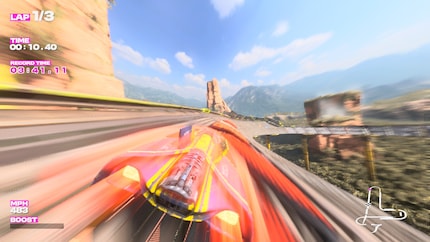
It’s great that the developers at Shin’en Multimedia didn’t go OTT on the gameplay. The acceleration elements aren’t excessive, and you don’t have to switch back and forth between colours too quickly. Even so, it’s still fun, ramping up the level of challenge in fast races. In addition to coins, jumping also earns you shortcuts. Mind you, there aren’t many of them – just one or two niftily positioned ones per course. This keeps the gameplay interesting without overwhelming you.

All four game modes are great fun. In Championship mode, you complete three consecutive races against nine AI-controlled vehicles. You get a different number of points in each race, depending on where you place. These are then added up. In Time Attack mode, you have to try to beat the developers’ best times. Multiplayer mode involves competing against other people, either in split screen in front of your TV or online via Gameshare. Turn on Super Hero mode, and you’ll have to enter individual races and win them without crashing.
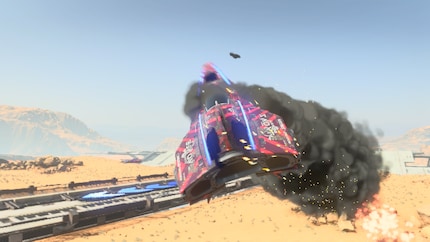
Time Attack mode is relatively easy. With a little practice, I quickly beat the developers’ times and am left racing against myself alone. Championship and Super Hero modes, however, are significantly trickier. Even on what’s supposedly the easiest of the three difficulty levels. This is more to do with the AI opponents than the controls, although these do require precision and timing. No matter how well I drive, the AI drivers always catch up with me. At least when I’m racing in one of the four vehicles available at the start, that is.
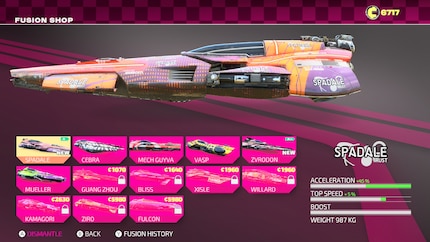
Your vehicle fleet is a crucial part of Fast Fusion. In addition to buying new, better vehicles with the money you win in races, you can also fuse them (hence the title of the game). You can see whether it’s worth fusing vehicles by using a rating system that’s kind of similar to energy stickers. A++ vehicles are more worthwhile than B-rated ones. This system makes a change from the usual method involving upgrading individual vehicle specifications. It gets a thumbs-up from me, even if the typical way would be easier to follow.
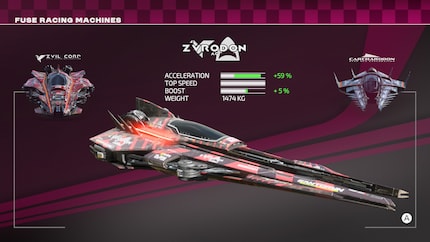
There’s a scant selection of race tracks. You currently have twelve to choose from, but more will be made available with future updates. However, the limited selection isn’t all that bad. At the end of the day, the ones the game does have are exciting and fabulously designed. When you hit the track, you can expect tornadoes throwing you off course, rain obscuring your view or giant robots almost trampling you.
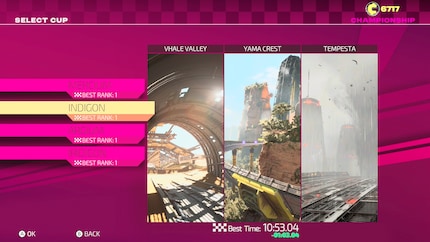
The tracks and vehicles look fantastic too. It’s astounding what Shin’en Multimedia has managed to get out of the Switch 2. There’s even a 4K 60 fps setting when the Switch is docked. However, this causes a lot of blurriness and makes textures look murky. In handheld mode in particular, the 1080p setting at 60 fps performs significantly better and looks really good – even if there is some blurriness. These cosmetic imperfections are mostly caused by the game’s heavy dependence on Nvidia’s upscaling technology, DLSS. However, given how fast you have to drive, you rarely notice these details anyway. The main thing is, Fast Fusion runs smoothly.
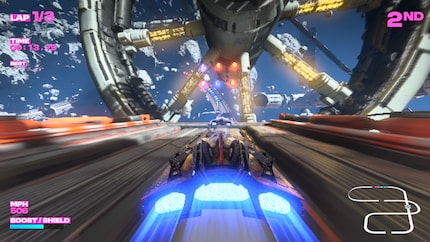
Fast Fusion has been available for Switch 2 since 5 June and was provided to me by Shin’en Multimedia._
Fast Fusion is a brilliant racing game. The fantastic gameplay focuses on just a few elements, but they’re seriously well implemented. These are limited to precise driving and using the boost and jump function. Vehicle fusion also creates a fresh approach to adapting your car to your own driving style.
My only fairly minor points of criticism are the limited selection of tracks and the occasional graphical imperfection caused by upscaling. The game’s high level of difficulty, especially at the start, might be off-putting to racer newbies. However, since it’s priced at just 15 francs/euros, I can highly recommend the game.
Pro
Contra
From big data to big brother, Cyborgs to Sci-Fi. All aspects of technology and society fascinate me.
Which films, shows, books, games or board games are genuinely great? Recommendations from our personal experience.
Show all